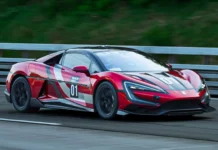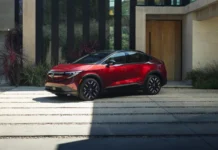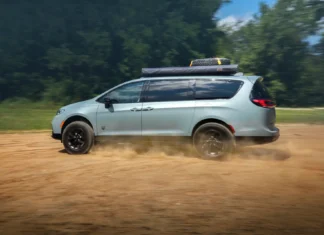
Nathan and Emme spend the day with the 2015 BMW i3 – the first all-electric powered car from BMW’s eco-focused “i” sub-brand. The boxy exterior profile and tall, skinny tires deceptively hide the performance we’ve come to expect from BMW. Engineered with a 50:50 front to rear weight balance, firm suspension, and responsive steering from the engineers at BMW, driving the i3 is convincingly more enjoyable than driving a Nissan Leaf.
Near instant torque response for the BMW i3 comes from a 125kW/170-horsepower electric motor and a single-speed transmission that drives the rear wheels. On a fully charged battery, BMW says the i3 has a range of 80 to 100 miles. After driving the i3 for a few days, the real-world range closer is to 70 – 80 miles in Comfort mode, which is the default. Switching to Eco+ mode will enable the car to reach its claimed range, but limits the top speed to 56 mph and shuts off the climate controls.
Available as an option is a backup generator that recharges the battery when it gets close to being fully depleted and can keep you going for another 60 miles. You can also manually activate the generator via iDrive when the battery drops below 75 percent charge, meaning the cells remain powered up for later.
Located underneath the i3’s carbon fiber, aluminum, and plastic skeleton is a rear-mounted 650cc, 34 horsepower, two-cylinder, gasoline-powered Range Extender generator option that roughly doubles the vehicle’s range. A gas gauge measuring the 1.9-gallon fuel capacity is positioned to the left of the battery gauge in the instrument display and counts down the miles remaining. When the 22 kWh Lithium-Ion battery becomes close to being depleted, the 330-pound Range Extender generator kicks in with an uncharacteristic gruff drone and maintains the battery’s current state of charge. Even though the Range Extender never directly drives the vehicle’s wheels, it will keep the i3 going for another 50 – 60 miles.
Straight-line acceleration is impressive, and that is typical of electric motors that have lots of torque and instant thrust. Much of that torque is available at highway speeds, too. Darting in and out of city traffic, and passing slower traffic on the highway is almost effortless. TLF Car recorded a 0 – 60 mph time of 7.50 seconds, totally unaffected by of the thin atmosphere 1 mile above sea level.
In this TFLcar video review, Nathan and Emme test the BMW i3 running errands, stopping for lunch to recharge, performing acceleration and braking tests.
























